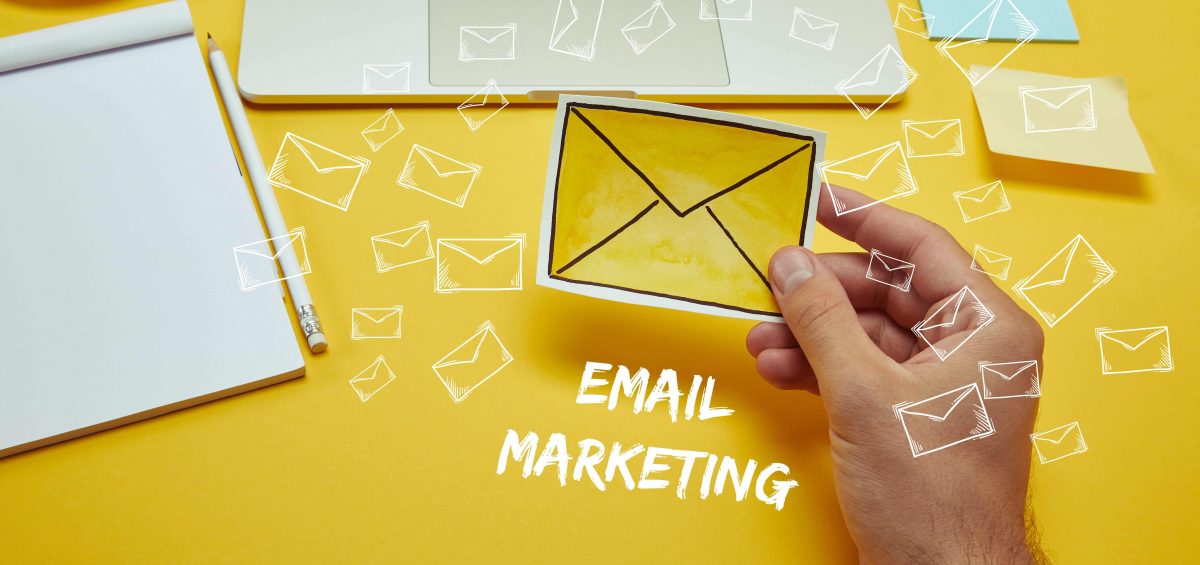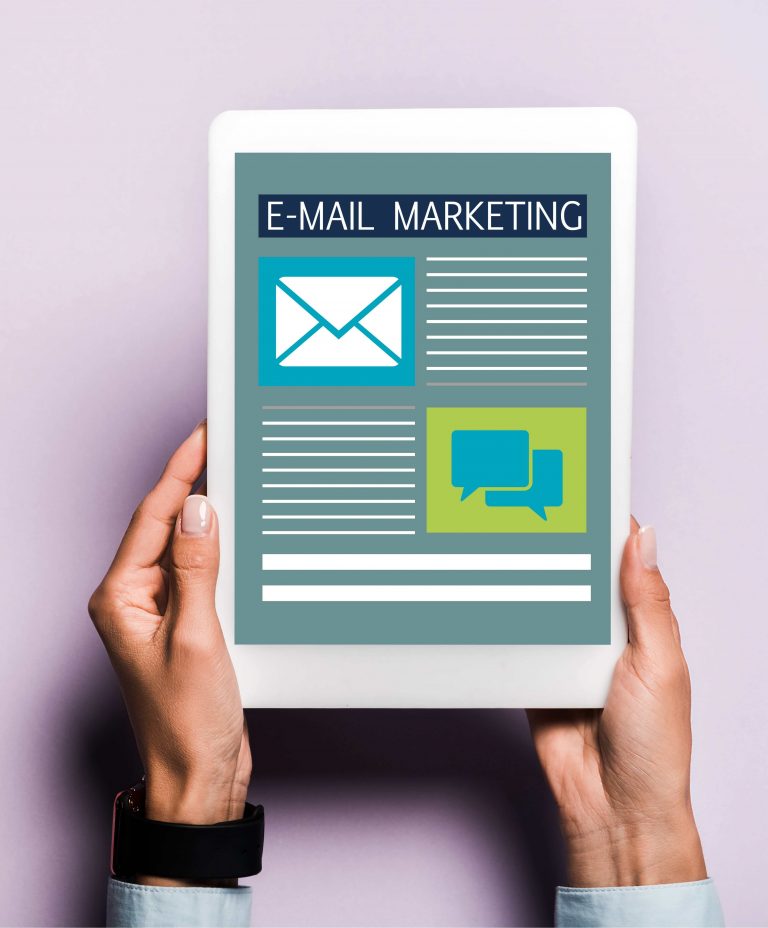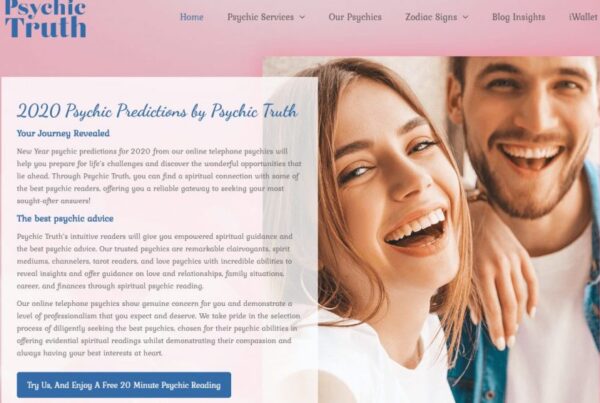
How often do people open and read marketing emails? For a small business running an email marketing campaign, every email opened is valuable, that’s why it is important to have a subject line that captures attention and email content that is relevant to the audience.
On average, the Nonprofit industry garners the highest open rate at 20.39%, followed by the Agriculture, Forestry, Fishing & Hunting industries at 20.13%. But for your average small local business such as those in the Real Estate, Design, and Construction industries, only 18.88% of emails gets opened and with a click-to-open rate of 16.47%. The open-rate for Professional Services is at 18.14%, and Food & Beverage is at 15.48%. With these benchmarks, there’s no guarantee that you’ll reach all your audiences; that’s why it’s important to effectively convey your message to everyone who will open your emails.
From the first impression that you give to people to the overall look and the details of the email, everything needs to count. To create an effective email marketing campaign – one that not only reaches your audience but elicits an active response from them, here are some reminders you need to follow:
#1 Set Your Goals
Before starting any campaign, you first need to set your objectives and the steps you need to accomplish these goals. There are many reasons for starting an email marketing campaign and sending out newsletters. You can introduce your brand to potential clients as well as update existing ones of new products and services. You can also use email marketing to drive traffic to your website and your social accounts to help increase sales. Nevertheless, every email you craft should have a purpose that will help you connect to potential clients and renew existing and old relationships.
#2 Build Your Contacts & Know Your Audience
In building your contacts, do not depend on purchased lists, especially if those have been attained illegally or without consent. Often, those lists have unclassified contacts which you cannot filter based on the requirements you’ve set for your campaigns. If you are a local construction company introducing your brand and you want to reach homeowners and contractors, you need not source contacts aged 25 and below since your market requires contacts in the demographic that has purchasing and decision-making powers. Sending emails to unfiltered contacts won’t be useful since you won’t have an idea of how many in your target market you have reached. Aside from new and filtered contacts belong to your target market, you can also include past connections in the form of old clients, acquaintances and those that have sent inquiries through your website. Sending them a new newsletter is beneficial, especially if you want to reintroduce your brand and your services to the people.
#3 Invest in a Good Email Marketing Software
Invest in a good email marketing software especially one that does not only send your emails without problems but one that can track the progress of your campaign and generate data results which you can analyse and get improvements from. Most email marketing software is either paid or have free-subscription for a limited number of contacts and email campaigns. If you are planning a series of newsletters which will be sent to hundreds and thousands of contacts, it’s best to subscribe to paid email marketing software to get the full features like campaign templates, WordPress integration, and in-depth analysis.


#4 Dedicate Time to Craft Your Copy
Make sure to establish your brand, especially when doing an email marketing campaign for the first time. Use an email that has your business name like ‘info@companyname.com’ not only to easily identify your brand but to show the legitimacy of the email and avoid being marked as spam. In writing your subject or the header of your email, make sure to convey the message of your newsletter. Avoid using statements that make your email look like spam such as ‘You have won ten thousand dollars!’ and those misleading ones like ‘Receive a FREE Gift when you signup’ when in truth, there are no such prices. Though this might be exciting to some, most people find it annoying and therefore, rather than gaining a good impression, they would just delete your email or even mark it as spam, preventing you from sending them further emails in the future. Remember to keep your subject header honest and simple and interesting enough to entice readers to open your emails.
Personalisation is key to connecting to your clients. Newsletters often start with a personalised greeting to the receiver to establish a connection and encourage them to read on. In address, the receiver, double-check the spelling and when available, use their given title such as Mr, Miss, Doctor, PHD, etc. to give a good impression. Make sure to add content that is valuable to the client like how your products and your services can benefit them. Remember to be honest and sincere in your words so that you won’t give off a bad impression, especially to first-time clients. Add links that redirect to your website and other social channels to increase online visibility. Do not use shortened URLs and make sure to link to correct pages, especially to websites and social media pages where they can gather more information about your products and services. Offering incentives in the form of adding promo codes and downloaded vouchers can also sometimes encourage potential clients to engage with your content provided that these are valid promotions that your clients can follow through and use to further engage with your business.
#5 Customise Email Templates
Customise your template based on what kind of newsletter you are sending. Make sure to reflect your brand by using font styles and colours according to your brand. Most importantly, don’t forget to add your business logo on the top or the lower part of your email. Use appropriate media when necessary, such as images of products that you are currently promoting. Videos can be added through downloaded files or through links that proceed to your social media pages or other video-hosting accounts such as your YouTube business page. Remember to achieve text and media balance to convey your message and leave a good impression effectively. Make your newsletter proactive and add the option for clients to subscribe to your future newsletters. At the same time, don’t forget to have the option for people to unsubscribe to your emails for not only is this the proper way to conduct email marketing campaigns but this also helps prevent them from blocking your contact for repetitive, unwanted emails and miss the chance to connect with them in the future.

#6 Schedule the Emails
Don’t just send your email any time of the day. Make sure to research when people most often open their emails to get the chance to reach your audience. If you are a local school trying to promote to parents, it might be best to send out emails when you know they are home so that upon notification, they can already open your email and not have the chance to have your email buried together with the rest of promotional emails. Group your contacts and send them by batches with varying degrees of changes to see how the campaigns will fare. Most importantly, before you schedule your campaign, remember to test your emails to check the finer details like how the images would appear, if attached files can be downloaded and if your links open to their corresponding correct pages.
#7 Be Responsive and Plan Followups
By using email marketing tools, your contacts can be grouped into different categories which you can then classify and plan for further marketing campaigns. Good email marketing tools will automatically mark those that have unsubscribed so that they won’t be part of future campaigns. For those who have not opened your email, you can still include them in your next campaign and hope that they do so next time. You can send a followup email to those that have opened and clicked on your email and enquire about how you can help them. And for those that have engaged with your campaign, make sure to reply to them with complete details about their enquiries. Since establishing a connection is an important part of promoting your business, make sure to follow up with those that have shown interest in your campaign and help them in any way that you can.
#8 Review Campaign for Improvements
It is important to review your email marketing campaigns using analytic tools to know the specifics of how well your campaign did in terms of industry standards. Having benchmarks can determine how well your campaign did amongst industry competitors. Take a look if the goals that you have set were met and see how the results of the campaign translated into action whether these are website clicks, email or phone call enquiries and actual sales. The results can help you determine points of improvements which you can apply to your next email marketing campaign. For those planning to send a series of email marketing campaigns, take note of the changes that happen over time and mark the improvements that have been applied to see how these adjustments affected your results.

At Bureauserv, we conduct a series of email marketing campaigns to update our clients of changes to our business or to ask how they are doing and if they need any assistance from us. We also create and manage email marketing campaigns for our clients, especially those who want to build their contacts to introduce their brand and promote their services to. Our skilled Virtual Assistants do Lead Generation and source contacts of your target market. Through good email marketing software such as MailChimp and SendInBlue, we organise contact details and create an email template that would give an excellent impression to your clients. With proper guidance and a clear view of the objectives of the campaign, we create a copy that effectively relays the message of the newsletter and connects the users to appropriate channels where they can learn more about the business and the products and services that our clients offer. After sending the emails, we complete our campaign by generating an email marketing campaign report which we discuss with our clients to check for changes and improvements which we can apply for future campaigns. Lastly, through our Customer Service and Sales representatives, we follow-up with the emails to make sure we connect to potential clients and keep them as active contacts.




